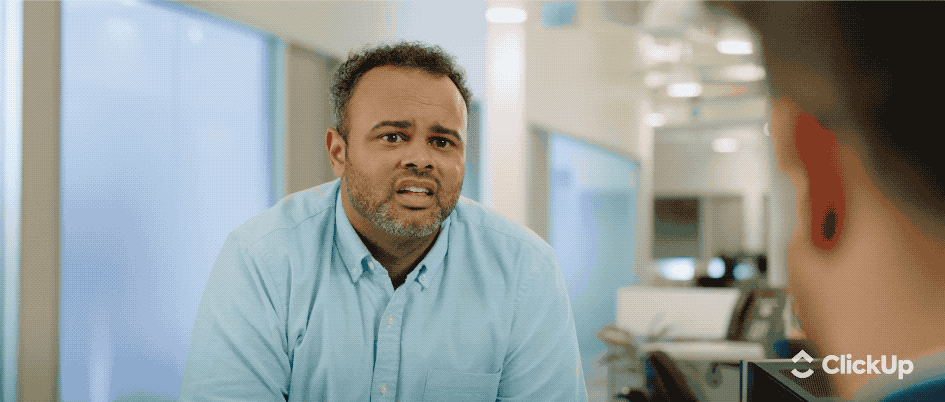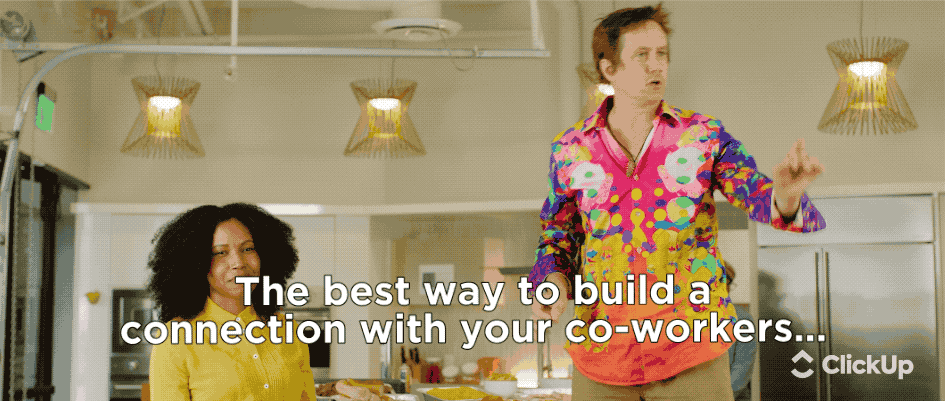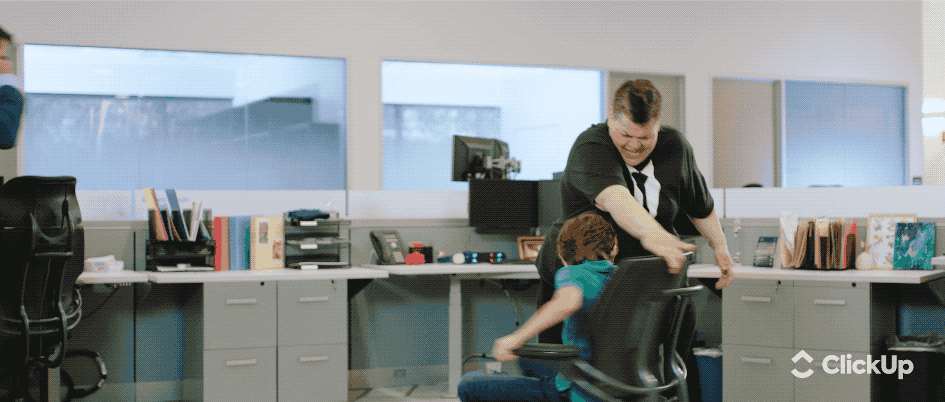4 Easy Ways to Help Your Team Return to Work Stronger

Sorry, there were no results found for “”
Sorry, there were no results found for “”
Sorry, there were no results found for “”
Fun fact: The “19” in “COVID-19” stands for “2019,” the year the virus was discovered.
Fast-forward two years: COVID-19 (and her evil step-sister Delta) are far from defeated, but thanks to millions of people making sure to quarantine, practice social distancing, and get vaccinated, parts of the world are beginning to feel closer to how they were pre-pandemic.
If there’s one benefit of returning to the office on a more frequent basis, it’s the opportunity to reconnect and communicate with your team in a way that just can’t be done on a Zoom call—no matter how expressive you get with your backgrounds.

But change isn’t easy. Just as tough as it was for many professionals to suddenly, permanently work remotely in 2020, being uprooted once again in the form of re-welcoming commutes and cubicles into the routine isn’t something you can adjust to overnight.
Read on to find out how to get the best teamwork from your crew than ever before—without sacrificing the flexibility that many of us aren’t ready to let go of.

If you’re among the 23% of people who didn’t feel more productive while working remotely, congratulations! But 77% of the nation disagrees with you—and that figure should influence how you manage your team in this new landscape.
For those who consider WFH to be a more productive experience, a huge aspect of that is the increased autonomy. As someone who is not special whatsoever for hating the feeling of being micromanaged, I’ve grown to view working remotely as an opportunity to prove to my bosses that I don’t need to be under a microscope to hit personal targets and be a team player.
As a leader, you’ve got to be aware of how comfortable people have gotten to finding their own systems of working and communicating—and how irritating it would be to suddenly have someone always popping by their desk to “help.”
Integrate Slack with your ClickUp to send any pressing reminders, or use assigned comments as a way to check in on specific tasks. Another way to keep the micromanagement at a minimum is to make sure your weekly 1-on-1 meetings discuss how communication is going and any areas to improve upon.


According to a Google study, 2020 has seen a 9% increase in Google search interest related to “team-building.” This statistic is no doubt inspired by the challenges virtual teams faced while working from home, struggling to feel connected as people.
Last month I finally got to meet my ClickUp colleagues in person at our first offsite in San Diego. I already had a feeling I’d click (ugh, sorry) with the people I’d been Zooming with for months, but there’s something about having drinks with co-workers, chatting about passions, and eventually losing your voice while scream-singing Britney Spears with someone you’ve never even Slacked before that just raises the stakes.
I already respected my colleagues as professionals, but enjoying their company as actual people brought my level of dedication to an all-time high. That time spent getting to know my co-workers off the clock and in person didn’t just help me boost how I worked with them, it made me excited to begin working in the office more.
Check out these team building tools!
It may seem like a frivolous expense to have the company foot the bill for dinner, drinks, or bowling, but leaders should always view team bonding as an investment. Socializing between team members increases communication patterns over 50%, so be sure your CFO signs off on a specialized Budget template specifically for figuring in some external team time.

If you’re a parent to (or have colleagues with) school-aged kids, the scenario above is probably a returning to work nightmare.
With many schools paused for summer vacation and unsure if they will be fully open by the Fall, parents—especially working mothers—are depending on remote work flexibility to continue even as offices reopen. Based on a worldwide Catalyst survey, women with child-care responsibilities are 32% less likely to leave their job if they have access to remote work.
But beyond providing parents with the necessary flexibility to give their best at work and at home, leaders should follow the same approach to ensure all employees are at their most productive. Business giants like Microsoft, Apple, and Google all are moving to implement a hybrid work model, where people have more freedom to balance IRL office work with telecommuting.
The bottom line is clear: offering remote work options amid re-opening is not only going to make your employees happier, it’s going to save your biz the big bucks. Like, $22,000 annually per full-time telecommuter.
For every employee who plans on continuing to work remotely, make sure your team is equipped with ClickUp’s helpful Remote Work templates. From onboarding to managing meetings, people will be as organized as ever—no matter where they’re working from.

A June 2021 McKinsey survey showed that roughly 1 in 3 workers who returned to their workplace already reported that the return-to-office shift has negatively impacted their mental health. The top reason for this sentiment? Concerns about contracting or spreading COVID-19.
While no workplace can guarantee that the virus won’t be spread or contracted in their office, there are safety protocols, redesign measures, and mandatory requirements that can provide massive reassurance to anyone returning with trepidation.
Taking the proper steps to prove that the building is physically safe to return to is the most crucial way to protect the people you’ve invested in. Here’s a quick run-through of the basics that people are going to be looking for as they re-enter the office:
As of the time of publication, it’s up to the discretion of the employer to decide if and what any requirements are to return to the office, including mandatory vaccinations.
Have your HR team create and distribute a COVID-19 Company Processes document via this ClickUp template; it’s easily editable so you can communicate safety guidelines and protocols clearly and instantly. It’s also 100% virtual so you know it’s sterile.
…Flexibility.
Returning to work isn’t something that you can just throw on a calendar. It’s something that will slowly roll out, evolve, and measurably mutate into a roadmap for what a successful workplace looks like after reality was turned upside down.
Flexibility was once something businesses were forced to embrace, but as autonomy re-enters the chat, perhaps we’ve come to realize how priceless it is.
© 2026 ClickUp